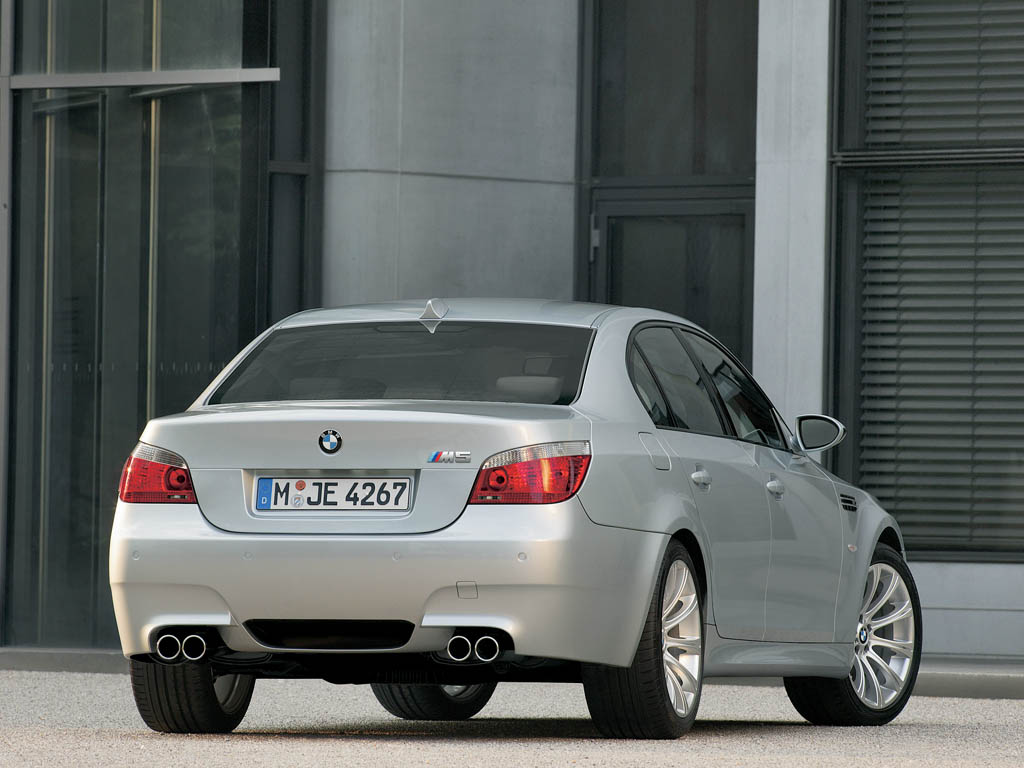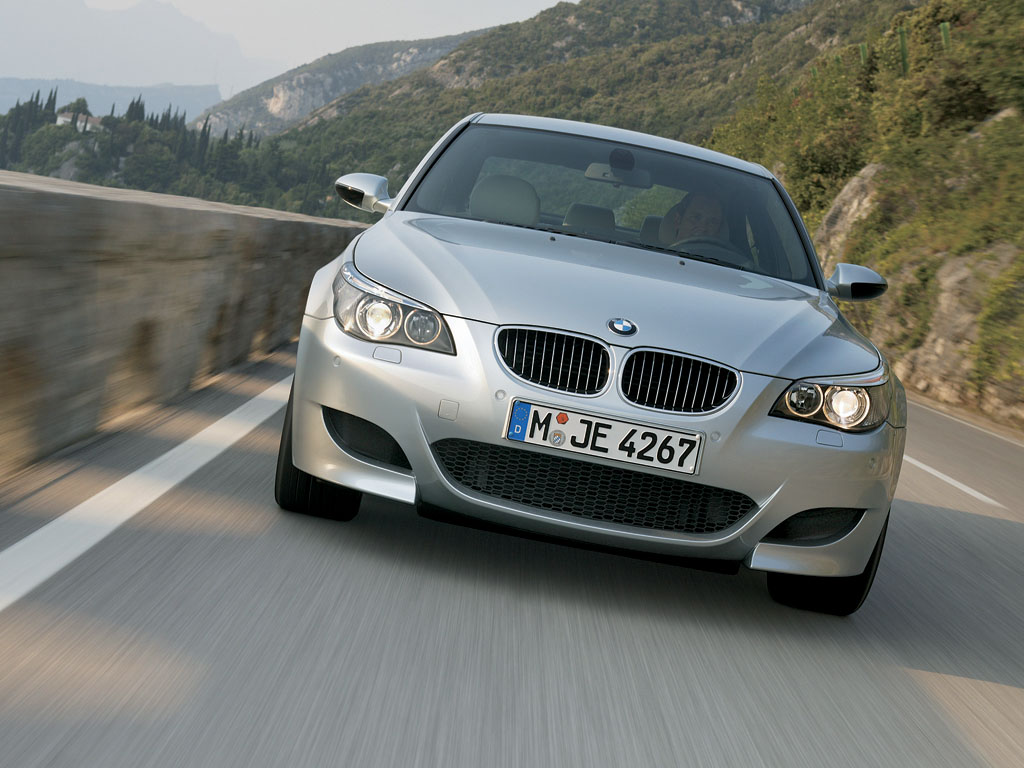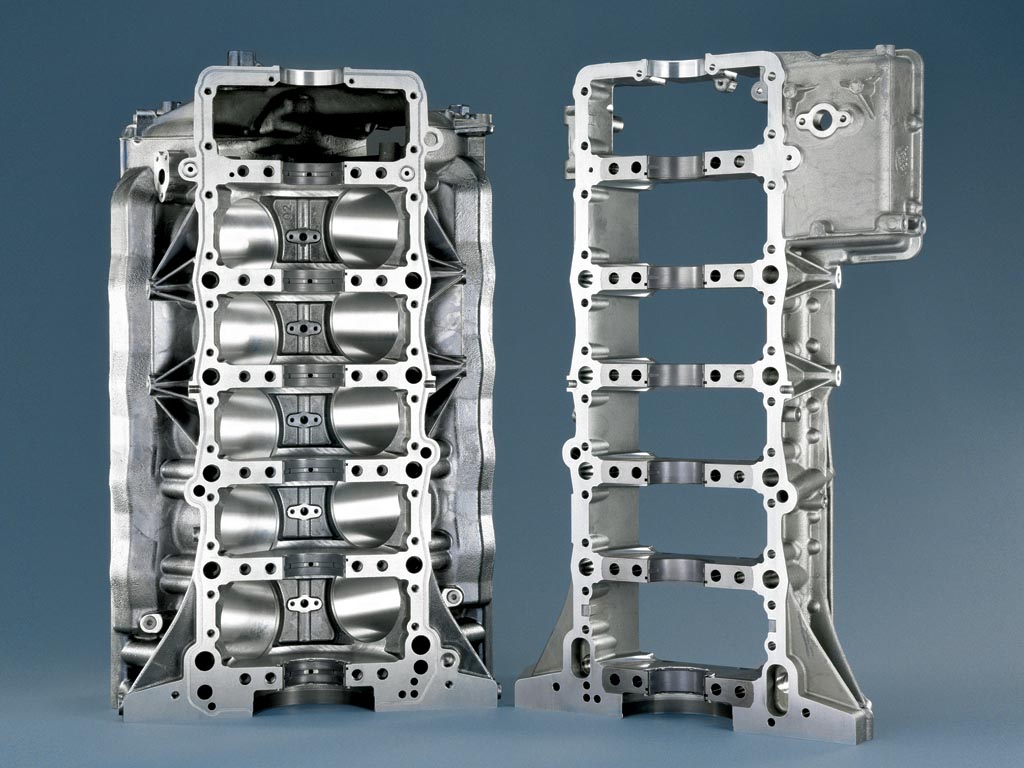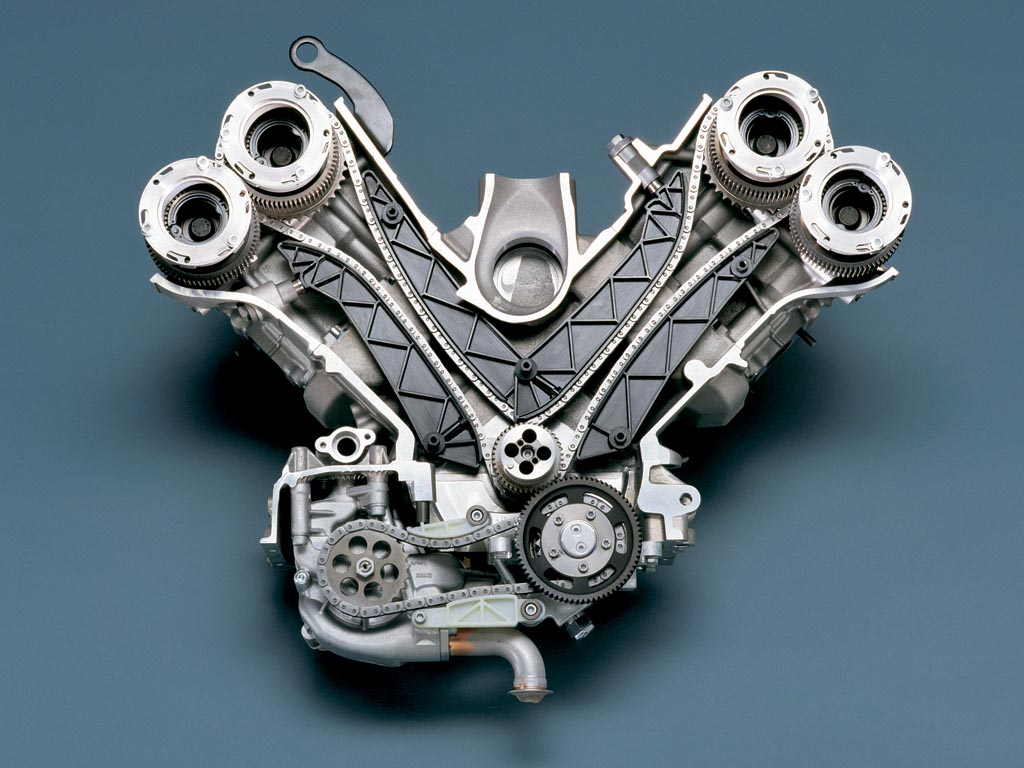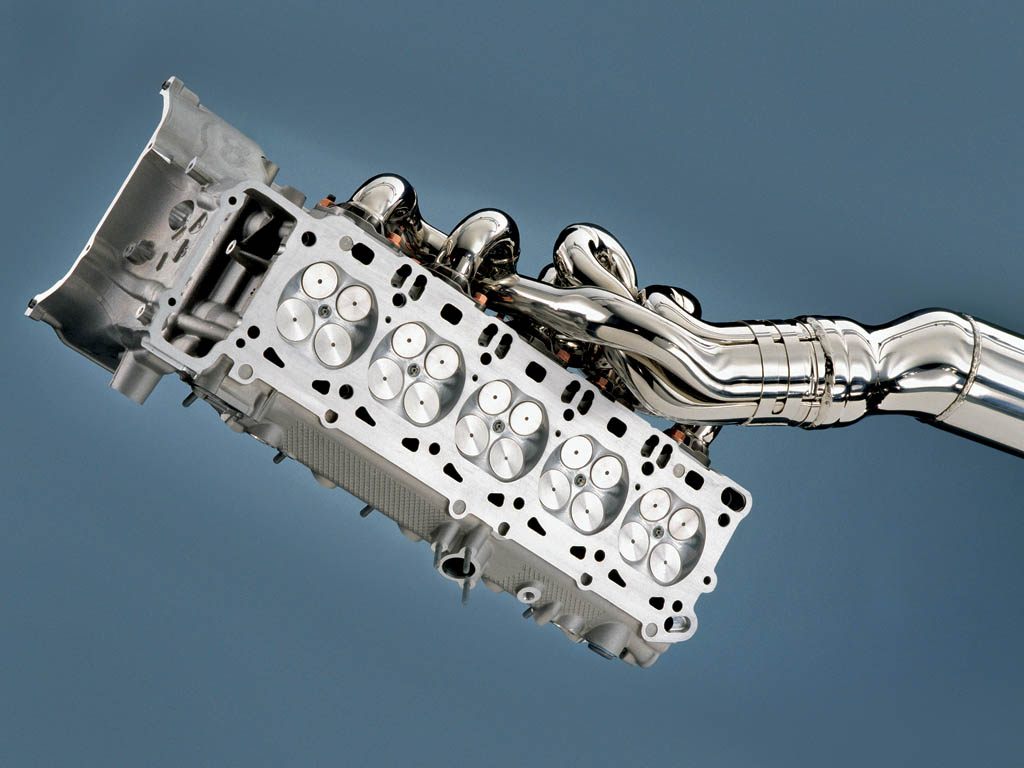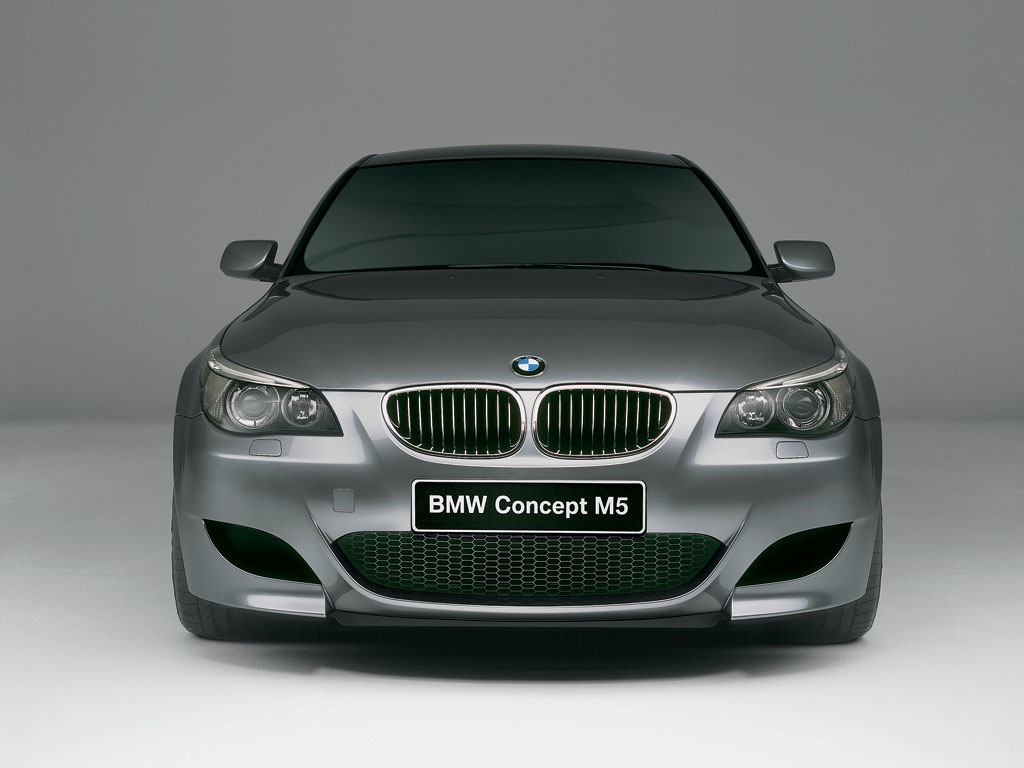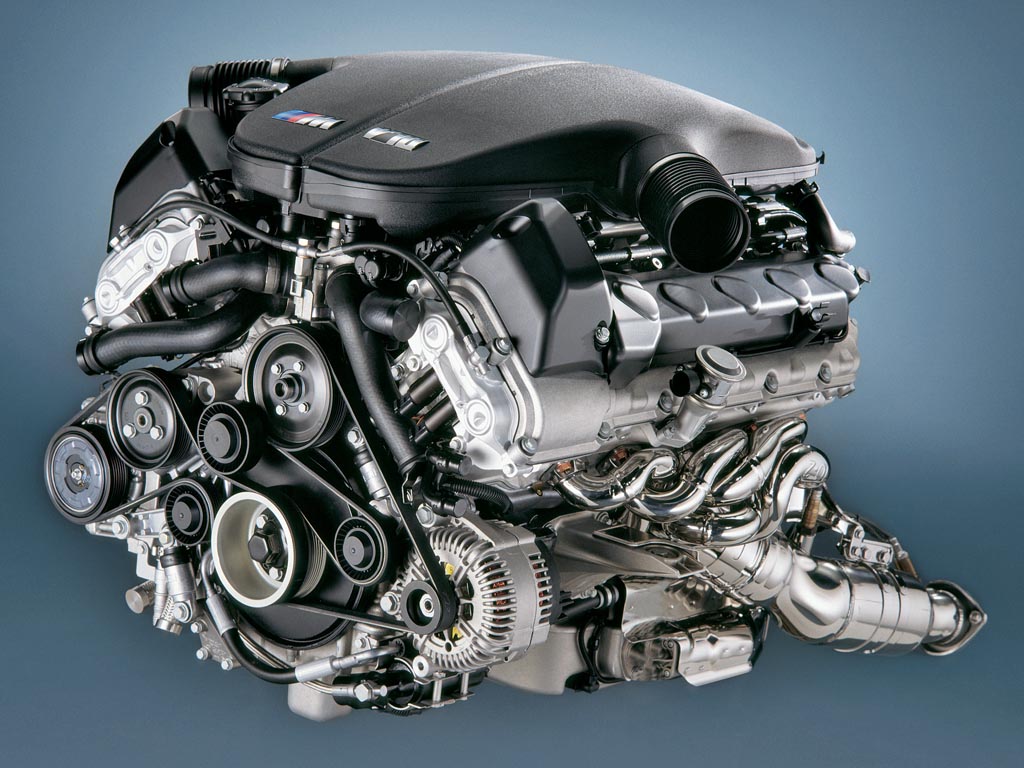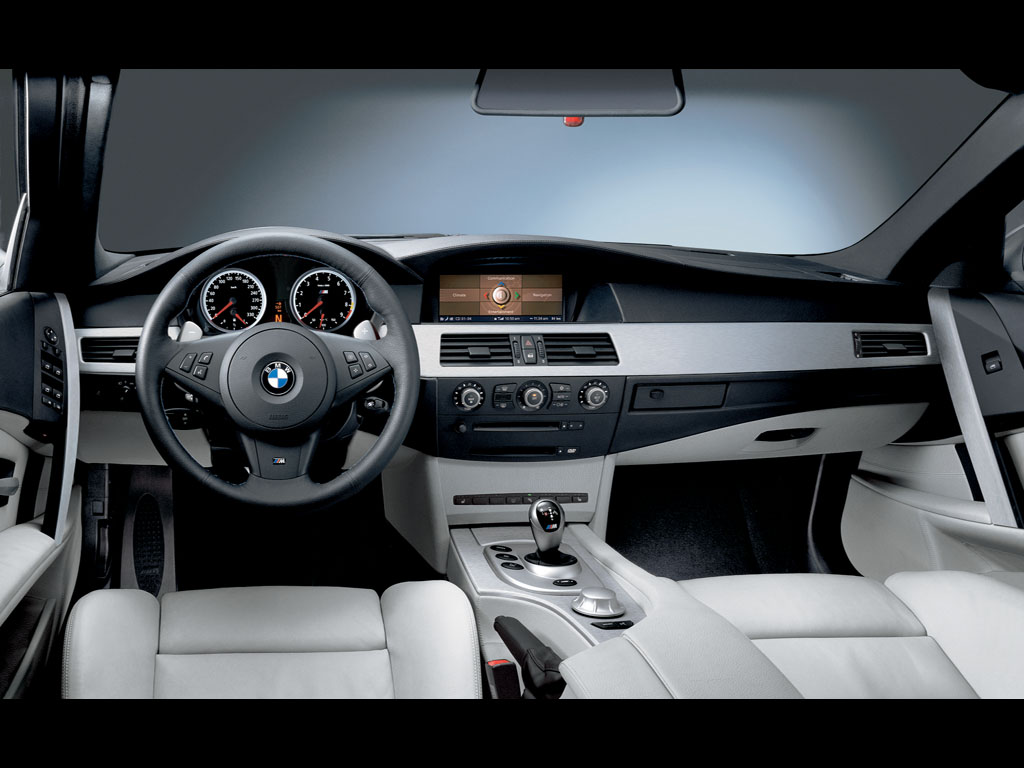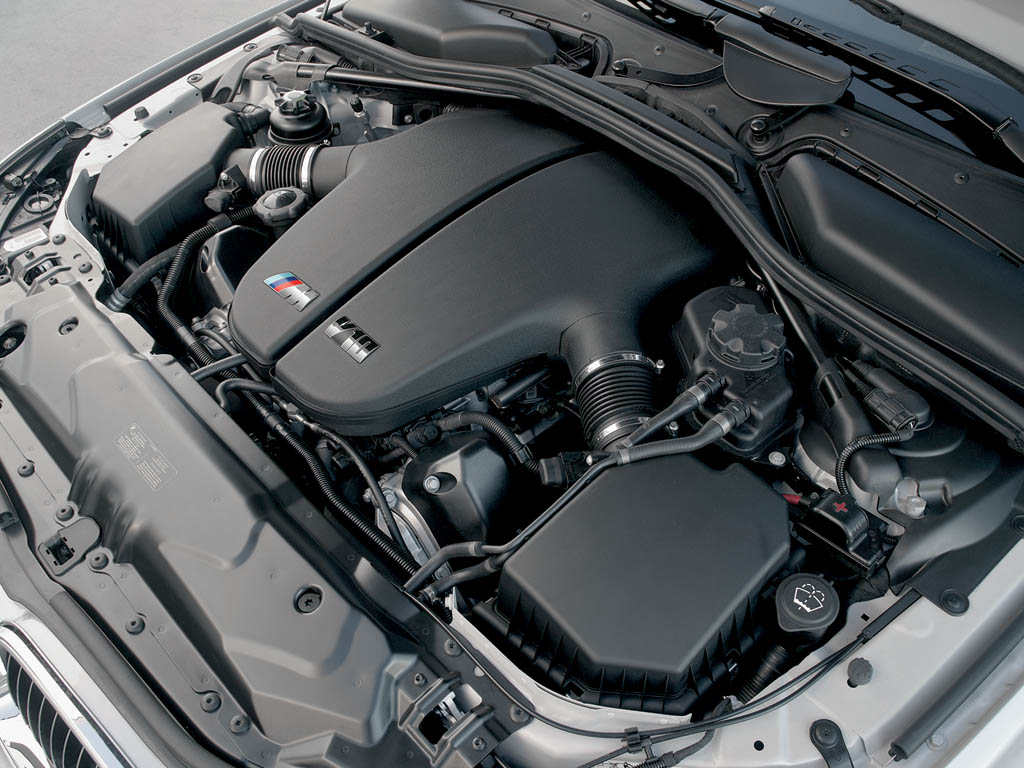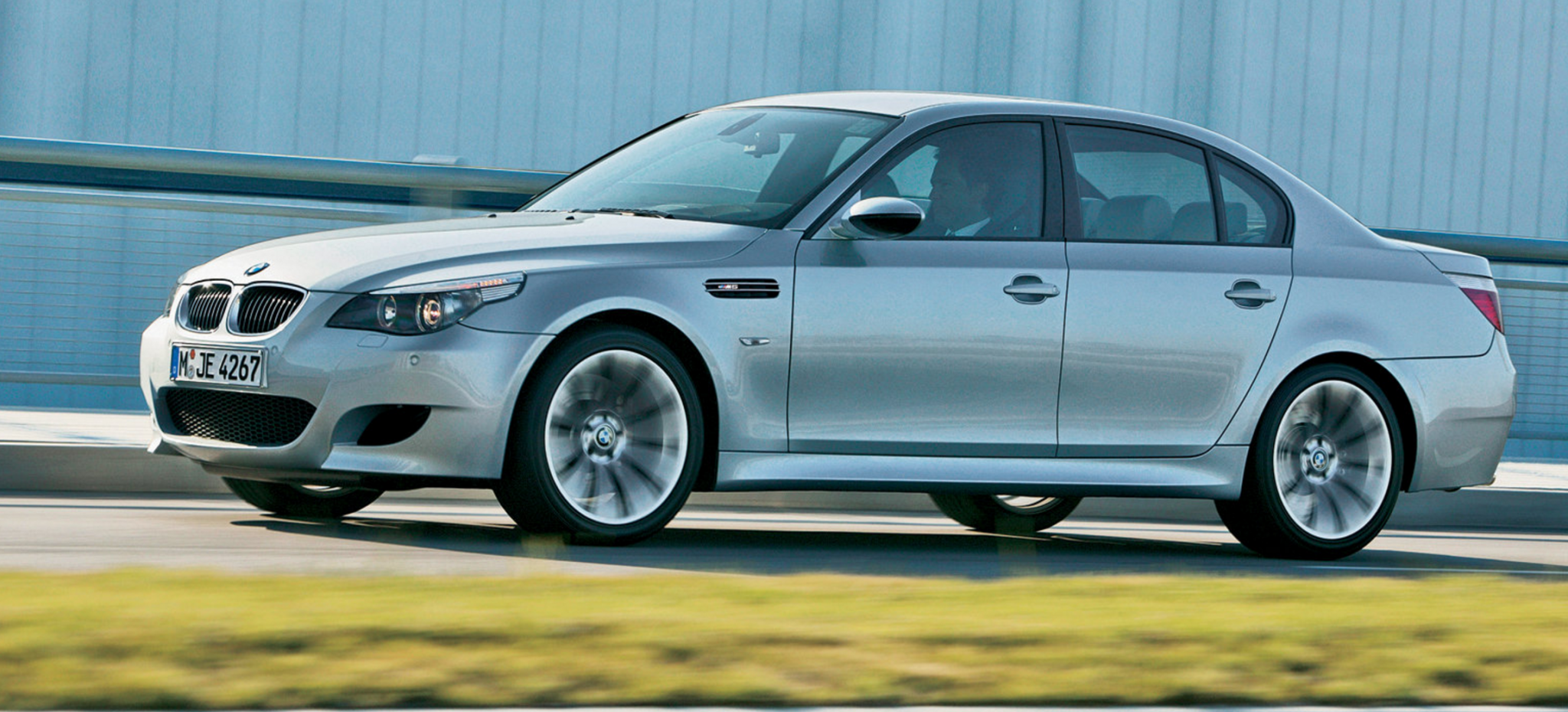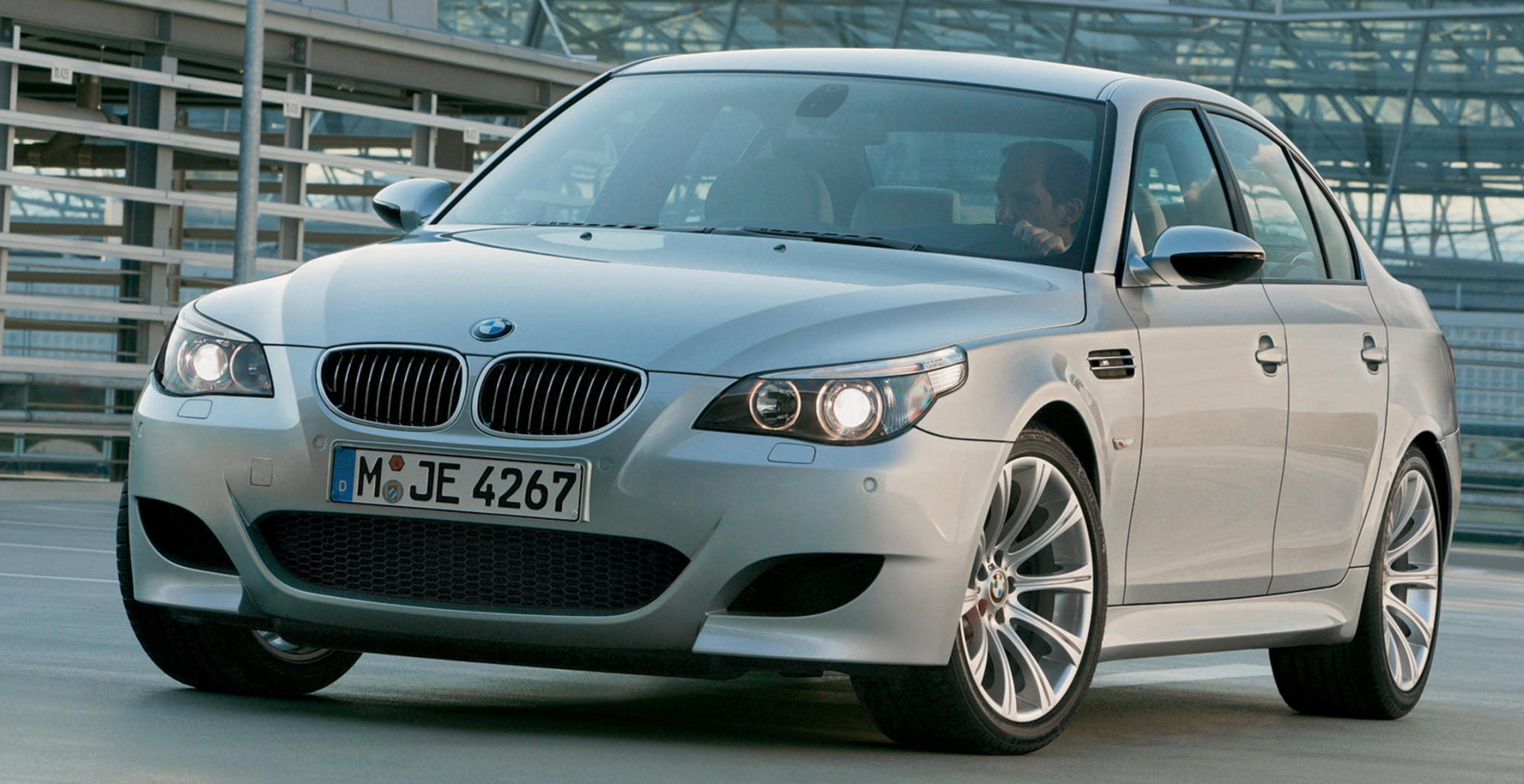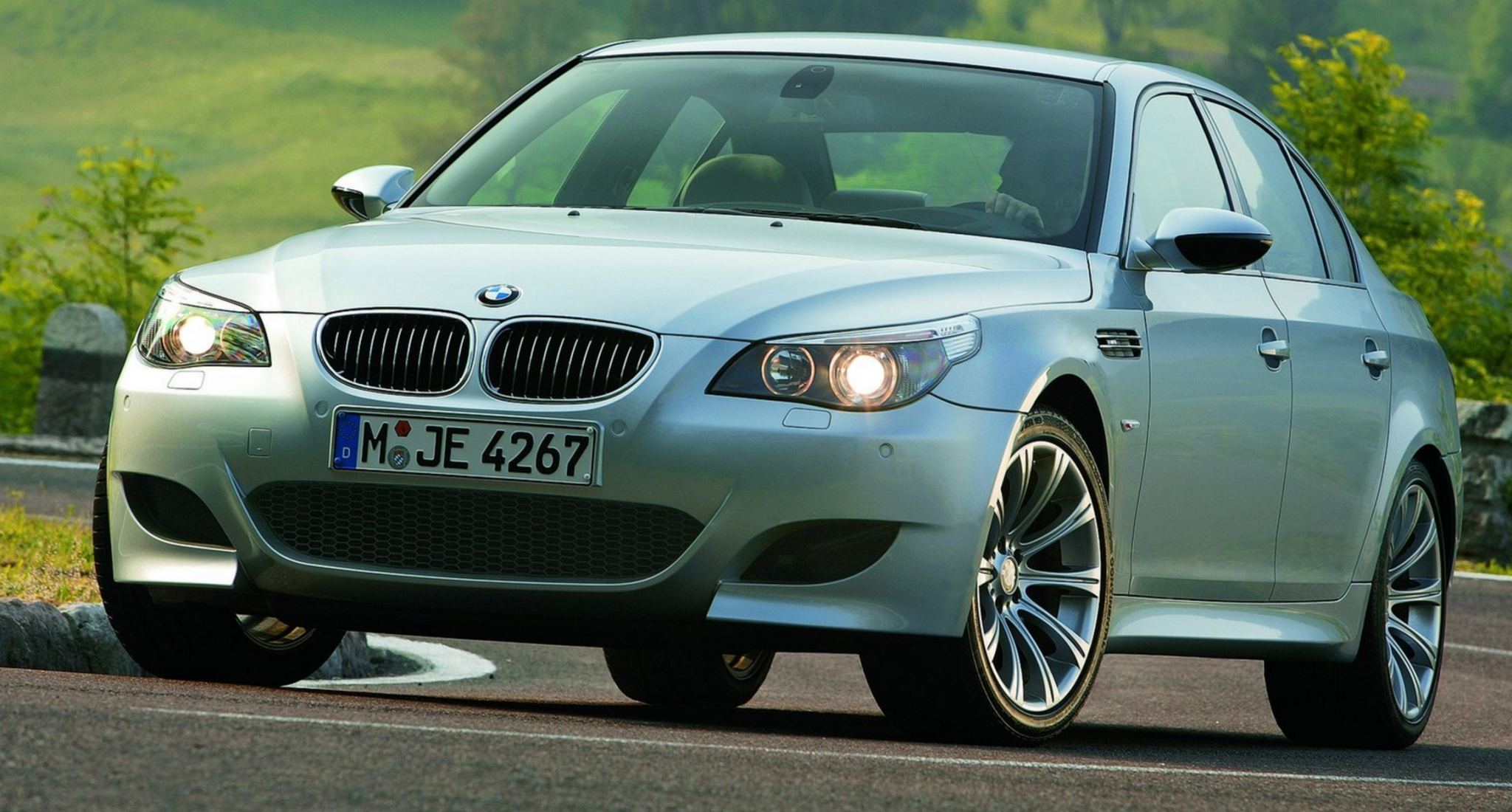2005 BMW M5
It has been 20 years since the launch of the first BMW M5. After three generations, more the 35,000 sales the BMW M5 still makes its position as the benchmark. The all-new fourth generation M5 has the first V10 engine to power a production sedan. This new engine is mated to a seven-speed SMG transmission. In the tradition of BMW M, the chassis has been engineered to keep up with the power while the exterior treatment is subtle, yet distinctive.
All new high-revving V10 engine
Each time BMW M introduces a new model, the focus of attention is rightly centred on what lurks beneath the domed bonnet bulge. For the E60 M5 sedan due on sale in mid-2005, the answer is a high-revving ultra-powerful V10. This engine shares more than just its number of cylinders with the Formula 1 engine that powers the BMW WilliamsF1 team. Technology forged in the heat of motorsport has enhanced the processes and components used in this new powerhouse.
As you would expect from BMW M, this high-performance normally aspirated engine generates enormous pulling force over its entire speed range. The most powerful production engine in the company’s history is manufactured along with other BMW special engines on a highly flexible production line at the BMW plant in Munich.
The BMW M V10 is the only high-revving power unit to be featured in a series-production car. The M5’s V10 boasts a cubic capacity of 5.0-litres and produces a maximum output of 507 BHP (378 kW) and a maximum torque of 520 Newton metres, making the M5 the most powerful production model in the BMW line-up.
The one-piece aluminium cylinder heads of the V10 engine are arranged in banks. The V10 power unit features four valves per cylinder, a typical BMW trait. All valve train components are of low mass. Thus, for example, the M engines feature for the first time low-weight, flow-optimised 5 mm-shaft valves, spherical valve tappets with hydraulic valve play compensation and single valve springs. All this results in a considerable mass reduction, which is a prerequisite for the realisation of the high-revving concept.
The bi-VANOS variable valve timing featured in the new M5 engine ensures an optimum charge cycle, thus helping to achieve extremely short adjustment times. This means in practice: increased performance, an improved torque curve, optimum responsiveness, lower consumption and fewer emissions. Thanks to the bi-VANOS technology, intake and outlet valves are always opened and closed at precisely the right moment. The naturally aspirated engine uses ten flow-optimised intake trumpets to inhale air from two intake plenums. Each cylinder has its own throttle, a feature typical of racing cars. All throttles are actuated simultaneously and are electronically controlled in order to make the engine highly responsive in the lower speed range, as well as to achieve an immediate response of the vehicle at the high end of the performance spectrum.
The MS S65 engine management system is the central factor behind the V10’s outstanding performance and emission data. With more than 1,000 individual components, this engine management system is unparalleled in its package density. Its processors are the most powerful currently approved for use in automobiles, as high engine speeds and comprehensive management and control tasks demand the utmost from this system. Receiving more than 50 input signals, this system calculates for each individual cylinder and for each individual cycle the optimum ignition point, the ideal cylinder fill, the injection quantity and the injection point. At the same time this system calculates and makes the necessary adjustments for the optimum camshaft angle and the optimum position of the ten individual throttles.
7-Speed Sequential
The high-revving M5 maximises the driver enjoyment quotient via a new seven-speed gearbox optimised for split-second changes. BMW M is the first manufacturer worldwide to offer a seven-speed sequential gearbox with drivelogic function. Even more highly refined than the previous six-speed transmission, the seven-speed SMG gearbox enables manual gear selection with ultra-short shifting times as well as comfortable cruising thanks to the automatic gear selection mode. The purpose of the additional seventh gear is to reduce engine speed and torque gaps.
The new seven-speed SMG gearbox allows gears to be changed using the central gearshift lever or via paddles mounted on the steering wheel. Compared to the previous SMG transmission, gear change times are increased by 20 per cent. Thanks to the SMG’s drivelogic function, the driver can choose from eleven gear change options, which enable them to adapt the SMG’s characteristics to their very own style of motoring.
Chassis Ride Comfort & Agility
Basis of the M5 suspension is the all-aluminium suspension of the basic 5 Series, the kinematics of which were adapted to the more powerful M5. The extremely stiff body construction used for the 5 Series and the large proportion of light aluminium axle components and ancillary parts are ideal preconditions for achieving optimum driving pleasure. These features are supplemented by a well-balanced, almost 50:50 weight distribution on the front and rear axles and, of course, the typical BMW rear wheel drive that keeps the steering entirely free from drive forces.
The suspension is mated to 19-inch wheels with performance tires. Keeping power on the road is critical, so the M5 features the Variable M differential lock. By constantly monitoring and comparing the speed of the rear wheels, the Variable M differential lock can ensure that power gets to the drive wheel with the most traction even in extreme driving situations. Its benefits are particularly apparent when accelerating out of a corner.
The M5’s Electronic Damper Control (EDC) allows the driver to adjust the suspension’s characteristics from sporty to comfortable by utilising a choice of three different modes – comfort, normal and sport. The driver operates EDC via the MDrive button on the steering wheel or by means of a push button adjacent to the SMG selector lever. The M5’s suspension also features optimised DSC Driving Stability Control. The Dynamic Stability Control system in the M5 has been designed to suit its performance. Of course, the DSC can be deactivated at the push of a button.
M Dynamic Mode (MDM) is a unique feature in the achievement of driving dynamics and an awesome experience for the driver with racing ambitions. Until now a similar feature was found only in the M3 CSL high-end racing machine and was known as M Track Mode. This subfunction of Dynamic Stability Control adapted for deployment in motor sport allows the M5 driver to push the car to the absolute limit of longitudinal and lateral acceleration at the touch of a button located on the steering wheel. In this mode DSC is not activated until the absolute limits have been reached, thereby permitting a sideslip angle the driver can just about cope with by means of moderate countersteering.
To complement its performance potential, the M5 is equipped with generously sized high performance brakes with perforated compound brake discs. The aluminum twin-piston brake calipers have been designed for minimum unsprung weight and maximum stiffness. The wheels sport 374 x 36 mm brake discs at the front and 370 x 24 mm brake discs at the rear.
Styling
In the tradition of BMW M, the exterior styling of the new M5 follows the wolf in sheep’s clothing philosophy. The casual observer may not, at first glance, recognize the M5’s performance potential. The less casual observer instantly will. The modified front spoiler and rear apron are instant giveaways. So too are the modified side sills. The wheel arches are more prominent in order to house the generous wheel and tire package. Following BMW M’s recent traditions, the new M5 has more aerodynamic exterior mirrors, four tailpipes and exclusive wheels. Similar to the latest M3, the M5 features exclusive gills incorporated into the front fenders.
The exclusive leather interior features sports seats. Other styling touches, from the instrument cluster to the center console and the steering wheel are all unique to the M5. Even the optional head-up display is M-specific.
The M5 is due on sale inmid-2005. Pricing and further specification details will be announced closer to launch.
2005 BMW M5 Gallery
See full 2005 BMW M5 Gallery here
Clarkson M5 Review Videos
In Detail
| type | Series Production Car |
| price $ | $ 81,200 |
| engine | V10 |
| position | Front Longitudinal |
| aspiration | Natural |
| valvetrain | DOHC, 4 Valves per Cyl w/bi-VANOS |
| fuel feed | Electronic Sequential Injection |
| displacement | 4999 cc / 305.1 in³ |
| bore | 92 mm / 3.62 in |
| stroke | 75.2 mm / 2.96 in |
| compression | 12.0:1 |
| power | 378.1 kw / 507.0 bhp @ 7750 rpm |
| specific output | 101.42 bhp per litre |
| bhp/weight | 126.75 bhp per tonne |
| torque | 520 nm / 383.5 ft lbs @ 6100 rpm |
| redline | 8250 |
| body / frame | Unit Steel |
| driven wheels | RWD w/M differential lock |
| wheel type | Cast Alloy |
| front tires | 255/40 ZR 19 Continental SportContact 2 |
| rear tires | 285/35 ZR 19 Continental SportContact 2 |
| front brakes | Vented and Cross Drilled Discs w/Twin Piston Sliding Calipers |
| rear brakes | Vented and Cross Drilled Discs w/Twin Piston Sliding Calipers |
| front wheels | F 21.6 x 45.7 cm / 8.5 x 18 in |
| rear wheels | R 24.1 x 45.7 cm / 9.5 x 18 in |
| steering | Rack & Pinion w/Servotronic Power Assist |
| f suspension | MacPherson Struts, Adj Shocks, Coil Springs, Anti-Roll Bar |
| r suspension | Multilink, Adj Shocks, Coil Springs, Anti-Roll Bar |
| curb weight | 4000 kg / 8818 lbs |
| wheelbase | 2889 mm / 113.7 in |
| front track | 1580 mm / 62.2 in |
| rear track | 1566 mm / 61.7 in |
| length | 4864 mm / 191.5 in |
| width | 1847 mm / 72.7 in |
| height | 1468 mm / 57.8 in |
| transmission | 7-Speed SMG Sequential w/Fully Automatic Mode |
| gear ratios | 3.99:1, 2.65:1, 1.81:1, 1.39:1, 1.16:1, 1.00:1, 0.83:1 |
| final drive | 3.62:1 |
| top speed | ~259.1 kph / 161 mph |
| 0 – 60 mph | ~4.2 seconds |
| 0 – 100 mph | ~9.4 seconds |
| 0 – 1/4 mile | ~12.4 seconds |






